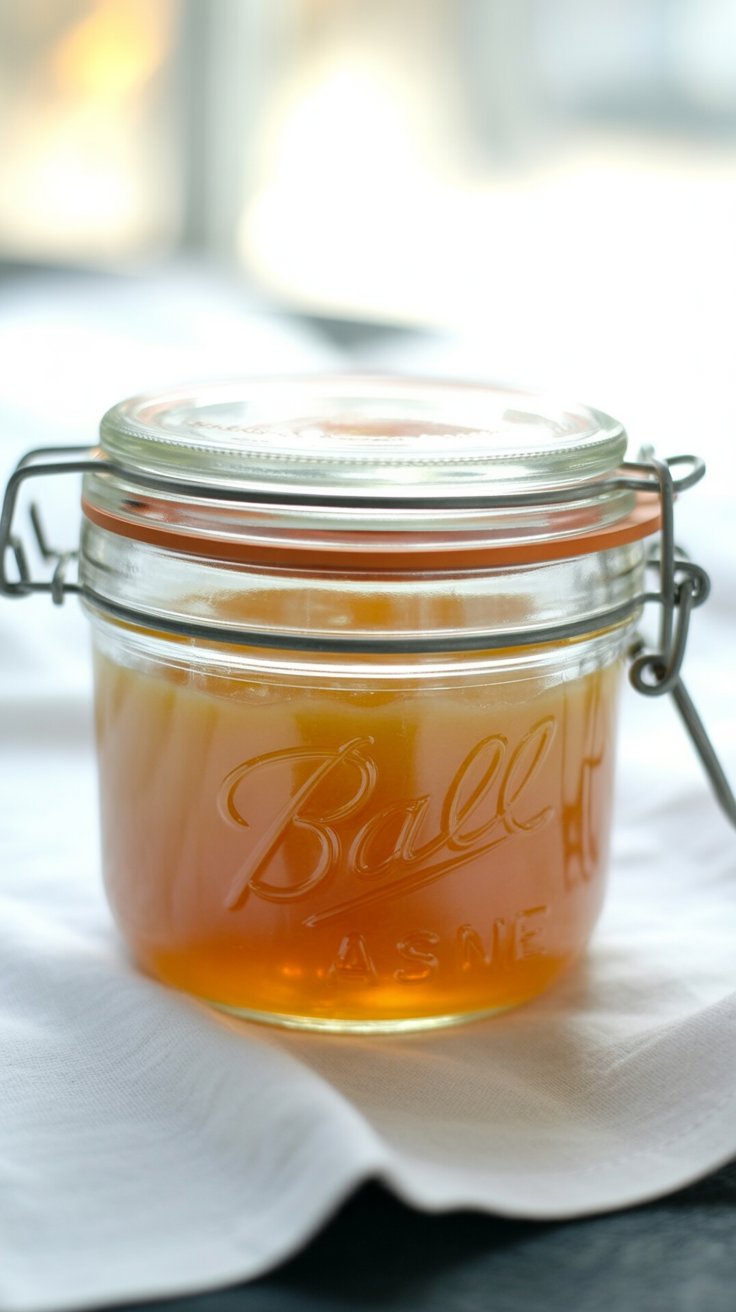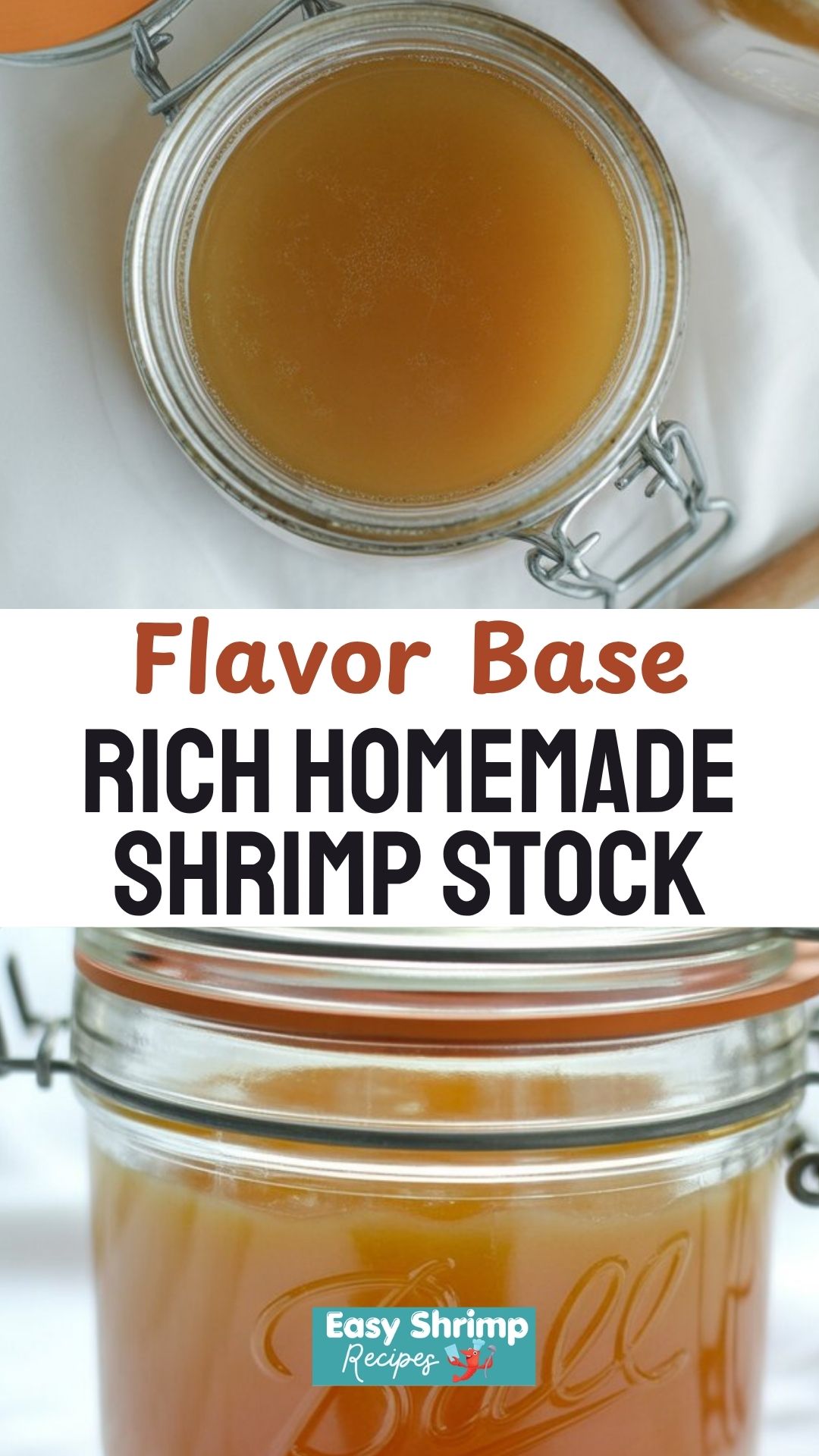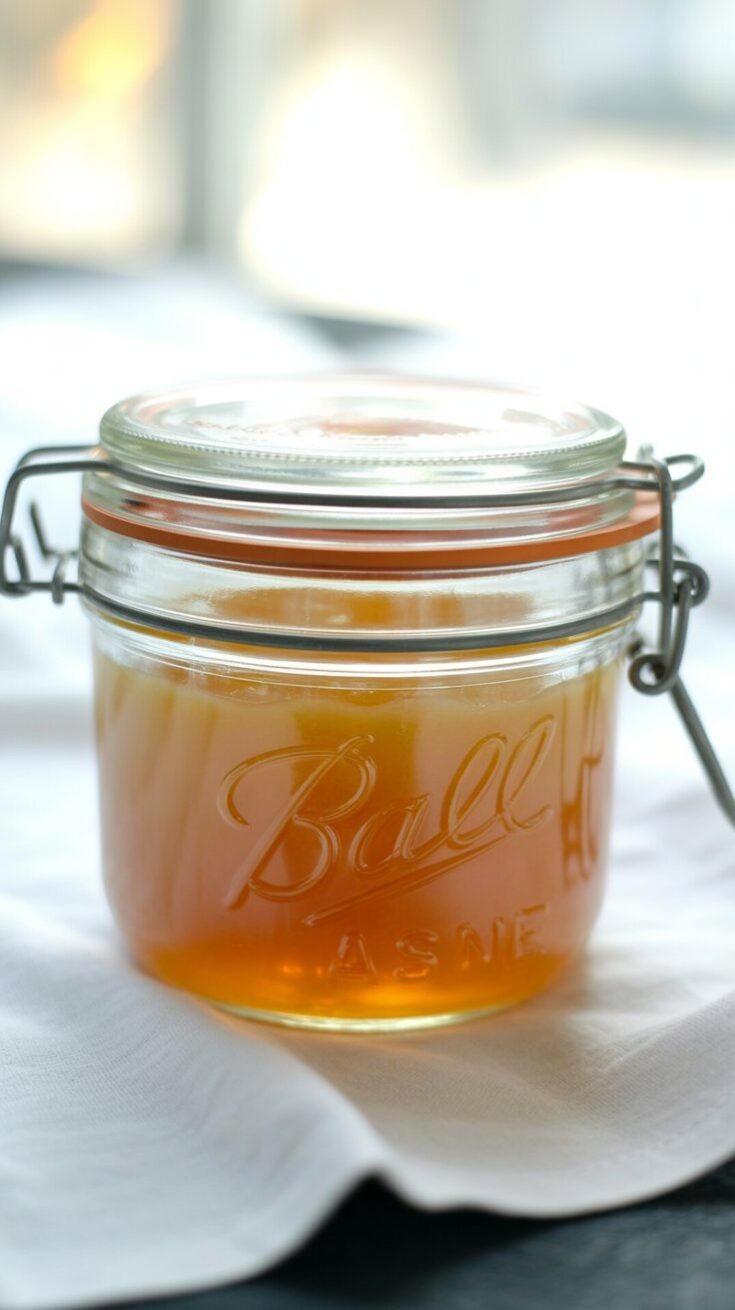If you keep shrimp in your freezer as often as I do, you’re sitting on flavor gold. A bag of shells that most people toss can become a pot of liquid sunshine — clean, briny, and packed with depth. I started making this Homemade Shrimp Stock after a beach trip where we cooked shrimp every other day. By day three, I had a bowl of shells and a curious mind. One hour later, I had a broth that made simple rice taste like it came from a seaside kitchen. Since then, I stash shells in a freezer bag and brew a batch whenever it’s full.

Why You’ll Love Making Your Own Shrimp Stock
-
Big flavor from scraps – Shells, a few veggies, and water turn into a rich, savory base you just can’t buy in a carton.
-
Fast – Simmered gently for 20–30 minutes, not hours. Dinner can still be on time.
-
Flexible – Keep it bare-bones with shells and water, or go aromatic with onion, carrot, celery, garlic, herbs, and spices.
-
Freezer-friendly – Portion it in jars or ice cube trays and you’ll have instant flavor on hand for soups, stews, curries, and risotto.
What Shrimp Stock Is (and Why It Works)
Shrimp shells hold loads of savory compounds and natural sweetness. A short sauté to brown the shells, then a light simmer coaxes out flavor without turning things bitter. The result is a clean seafood base that boosts everything from chowder to paella. Think of it as the seafood cousin of chicken stock — gentler, slightly sweet, and fragrant.
Ingredients and Smart Swaps
-
Shrimp shells from 1–2 pounds shrimp (heads add extra depth if you have them)
-
Light olive oil or any neutral oil
-
Onion, carrot, celery – classic base; leave onion skins on for a deeper golden color
-
Garlic – one or two cloves, lightly crushed
-
Parsley – stems are perfect here
-
Bay leaf – one or two
-
Whole coriander seeds – warm citrusy note that loves seafood
-
Black peppercorns – whole, for gentle heat
-
Water – cold, enough to cover (about 6–7 cups)
Optional boosters (use one or two):
-
A small strip of lemon peel (no white pith)
-
A thumb of ginger, sliced
-
Tomato paste (½ teaspoon) for a rosy hue and umami
-
A splash of dry white wine to deglaze after sautéing the shells

Step-by-Step: How I Make It at Home
-
Prep the shells
Rinse shells briefly under cold water to remove any grit. Pat dry. If shrimp were brined, give the shells a quick rinse to keep the stock from being overly salty. -
Sauté for flavor
Film a heavy pot with oil over medium heat. Add shells and cook 5–7 minutes, stirring until they turn bright pink and smell sweet and toasty. This browning step is where the magic starts. -
Add aromatics
Stir in onion, carrot, celery, and garlic. Cook 3–4 minutes to soften. If using wine, splash it in now and let it sizzle for 30 seconds. -
Simmer gently
Add parsley, bay, coriander, peppercorns, and cold water to cover by about an inch. Bring just to a light boil, then drop to a gentle simmer for 20–30 minutes. Skim any foam that rises. You want tiny lazy bubbles, not a rolling boil. -
Strain
Pour through a fine mesh strainer into a bowl or large measuring jug, pressing lightly on the solids. Discard solids. -
Cool and store
Cool to room temp, then refrigerate. Use within 4 days or freeze up to 3 months.
Cook’s note: A longer simmer can pull bitterness from shells. Keep it under 45 minutes.
Tips and Tricks from My Kitchen
-
Roast for deeper flavor: If the oven’s on, roast shells and veggies at 200°C/400°F for 15 minutes before simmering.
-
Keep a freezer bag: Toss shells from weeknight dinners into a zip bag and freeze. When you hit 1–2 pounds of shells, you’re ready.
-
Salt later: I keep the stock unsalted so it plays nicely in recipes that reduce. Season the final dish instead.
-
Clear stock hack: Don’t stir much during the simmer and avoid a hard boil. It keeps the liquid clear.
-
Avoid metallic taste: Use stainless steel or enamel pots. Bare aluminum can react with acidic ingredients.
-
Pressure cooker option: 10 minutes at high pressure, natural release, gives a lovely, clean stock.
Make Ahead Tips
-
Batch it: Double the recipe and freeze in a mix of 1-cup containers and ice cube trays. Cubes are perfect for pan sauces.
-
Label smart: Note “shrimp stock, unsalted” with the date and approximate cups. Future you will be grateful.
-
Chill fast: Spread the pot in a shallow pan or use an ice bath so it cools quickly before refrigerating.
How to Use Shrimp Stock
-
Soups: Corn and shrimp chowder, coconut curry soup, New England–style seafood soup, Thai-inspired noodle soups.
-
Rice dishes: Paella, jambalaya, seafood risotto (game-changer), congee.
-
Sauces: Quick pan sauce for seared shrimp or scallops; reduce with a knob of butter and a squeeze of lemon.
-
Pasta: Garlic-chili shrimp pasta, linguine with clams — swap part of the water for stock to layer in flavor.
-
Beans and grains: Cook farro, barley, or white beans in a mix of stock and water for subtle seafood depth.
Storage
-
Fridge: Up to 4 days in sealed jars.
-
Freezer: Up to 3 months. Leave headspace in jars to allow for expansion.
-
Thaw: Overnight in the fridge or directly in a pot over low heat.

Frequently Asked Questions
Can I make shrimp stock without vegetables?
Yes. Shells and water alone make a light, clean stock. Add a bay leaf if you have it.
Why is my stock cloudy?
A vigorous boil or lots of stirring can cloud it. Keep the simmer gentle and avoid shaking the pot.
Can I use shrimp heads?
Absolutely. They add body and a deeper seafood note. Rinse well and sauté thoroughly.
Is it okay to use salted shells?
If your shrimp were pre-brined or heavily seasoned, rinse the shells first and skip adding salt to the stock.
What if I only have a small amount of shells?
Freeze them until you collect more, or make a quick cup or two of stock and use it for sauces.
How long should I simmer?
Aim for 20–30 minutes. Longer times can pull bitterness from the shells.
Can I pressure can shrimp stock?
I don’t recommend canning shellfish-based stocks at home. Freeze instead for safety and best flavor.
Rich Homemade Shrimp Stock

This Homemade Shrimp Stock is a rich, flavorful base that elevates seafood soups, risottos, and sauces.
Ingredients
- 1 teaspoon extra light olive oil
- shells from 2 pounds of shrimp, rinsed
- 1 medium yellow onion, quartered (peel left on)
- 2 carrots, roughly chopped
- 2 celery stalks, roughly chopped
- 3 cloves garlic, smashed and peeled
- 6 sprigs fresh parsley
- 2 bay leaves
- ½ teaspoon whole dried coriander seeds
- ¼ teaspoon black peppercorns
- 6 cups cold water
Instructions
- In a heavy-bottomed pot, heat the olive oil over medium heat. Add the shrimp shells, onion, carrots, celery, and garlic. Cook until the shells turn pink and the vegetables begin to soften, about 10–15 minutes.
- Stir in parsley, bay leaves, coriander, peppercorns, and cold water. Cover the pot with the lid slightly askew and bring to a boil. Lower the heat and simmer gently for 15 minutes.
- Place a fine mesh strainer over a large bowl or measuring cup. Use a ladle to remove most of the solids, then carefully pour the remaining liquid through the strainer. Discard the shells and vegetables.
- Let the stock cool completely before storing.
Notes
- Refrigerate for up to 1 week or freeze for up to 3 months.
- Portion into 2-cup containers for soups or risotto, or use ice cube trays for sauces.
- For a deeper flavor, you can roast the shells and vegetables before simmering.
Nutrition Information
Yield
6Serving Size
1Amount Per Serving Calories 233Total Fat 4gSaturated Fat 1gTrans Fat 0gUnsaturated Fat 2gCholesterol 319mgSodium 1464mgCarbohydrates 12gFiber 1gSugar 2gProtein 36g
Easy Shrimp Recipes.com, occasionally offers nutritional information for recipes contained on this site. This information is provided as a courtesy and is an estimate only. This information comes from online calculators. Although allchickenrecipes.com attempts to provide accurate nutritional information, these figures are only estimates.
Final Thought
There’s a quiet joy in turning kitchen odds and ends into something that makes dinner sing. A jar of shrimp stock in the fridge means risotto that tastes like the coast, soups with real backbone, and sauces that don’t need much else. Start saving those shells — your future bowls of comfort will thank you.

